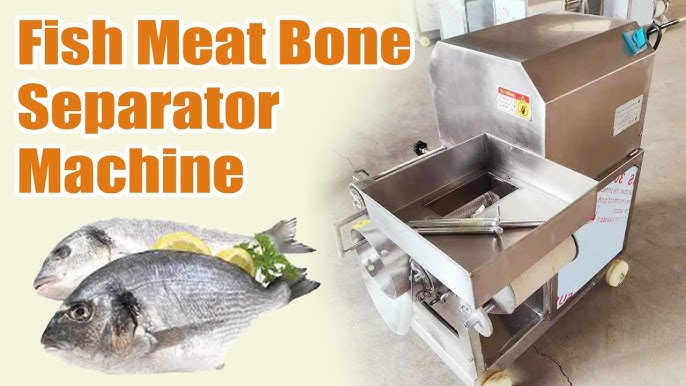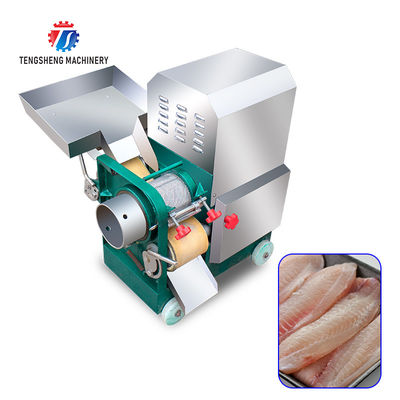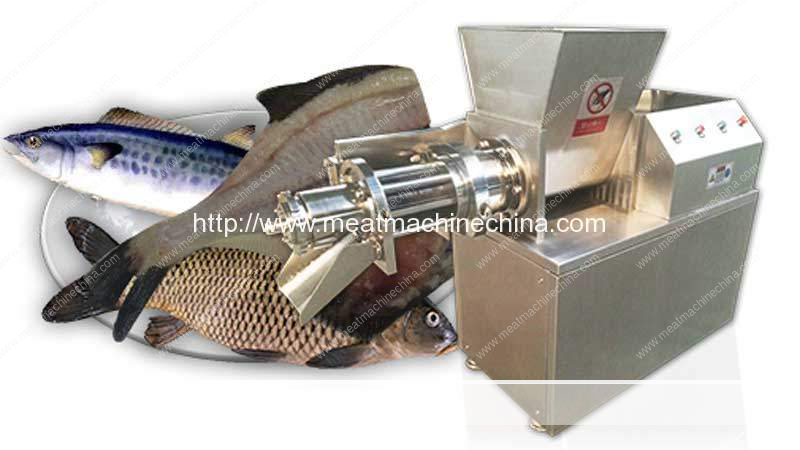10 years of experience as a food machinery equipment manufacturer
10 years of experience as a food machinery equipment manufacturer
The global seafood industry continually seeks advancements to enhance efficiency, product quality, and sustainability. A significant area of development lies in the mechanical separation of fish meat from bone, skin, and other non-edible parts. Among the technologies gaining attention are fish meat separators developed with Norwegian expertise, reflecting a tradition of innovation in marine resource utilization.

Historically, manual deboning and filleting have been standard practices in fish processing. While effective for certain applications, these methods can be labor-intensive, time-consuming, and may result in variable yields. The quest for more efficient and consistent meat recovery led to the development of mechanical separators. Early iterations of these machines, while functional, sometimes faced challenges related to the texture and quality of the separated meat, particularly with more delicate fish species.
Modern fish meat separators, including those with origins in Norwegian design and engineering, represent a significant leap forward. These systems are engineered to address the limitations of older technologies, focusing on maximizing yield while preserving the integrity of the fish flesh. The impetus behind such developments is multifaceted, driven by economic pressures to optimize raw material use, consumer demand for high-quality processed seafood products, and an increasing emphasis on sustainable processing practices that minimize waste.
The fundamental principle of a fish meat separator involves applying mechanical force to detach edible flesh from the skeletal structure and skin. However, the sophistication lies in how this process is controlled and executed. Advanced systems, often characterized by Norwegian ingenuity, employ precise mechanisms to achieve this separation with minimal damage to the meat fibers.
Key operational aspects often include:
The adoption of advanced fish meat separation technology, such as that developed with Norwegian engineering principles, offers a range of benefits to seafood processors.
Enhanced Yield and Resource Utilization:
Perhaps the most significant advantage is the substantial increase in meat recovery. Fish frames, which might otherwise be discarded or processed into low-value fishmeal, can yield a considerable amount of high-quality meat. This improved utilization of raw materials directly impacts profitability and contributes to more sustainable use of marine resources. By extracting more edible product per fish, processors can reduce their overall raw material requirement for a given output volume.
Improved Operational Efficiency:
Automated separation processes dramatically reduce the manual labor required for deboning and meat recovery. This not only lowers labor costs but also increases throughput. A single machine can often process a volume of fish that would require a large team of manual workers, leading to faster turnaround times and a more streamlined production flow. Consistency in output is another hallmark of these machines, reducing the variability often associated with manual processing.
Product Quality and Versatility:

Modern separators are designed to minimize damage to the muscle fibers, resulting in separated meat that retains a good texture and appearance. This is crucial for its use in a variety of value-added products. The recovered meat, often referred to as mince or deboned meat, is suitable for applications such as:
The quality of the separated meat often allows it to be incorporated into higher-value product lines than was previously possible with meat recovered by cruder methods.
Hygienic Design and Food Safety:
Recognizing the paramount importance of food safety in the seafood industry, Norwegian-influenced designs typically emphasize hygienic construction. Smooth surfaces, easily accessible parts, and materials that withstand rigorous cleaning and sanitization protocols are standard features. This helps processors meet Hazard Analysis and Critical Control Points (HACCP) requirements and maintain consumer confidence.
Waste Reduction:
By maximizing the recovery of edible portions, these separators significantly reduce the volume of processing waste. What remains (bones, skin) is often cleaner and more suitable for further processing into by-products like high-quality fishmeal, fish oil, or collagen, thereby promoting a circular economy within the seafood sector.
Norwegian-developed fish meat separators, and similar advanced technologies, find applications in various segments of the seafood processing industry:
Norway has a long and storied history in fishing and seafood processing. This deep-rooted expertise, combined with a strong engineering tradition, has naturally led to significant contributions in seafood processing technology. The emphasis is often on robustness, reliability, and efficiency, driven by the demanding conditions of the North Atlantic and a competitive global market. Innovations from this region tend to be well-engineered, built for longevity, and designed with a practical understanding of the challenges faced by seafood processors. This heritage often translates into machinery that is not only effective but also durable and user-friendly, with a strong focus on operator safety and ease of maintenance.
While the benefits are compelling, processors considering the adoption of advanced fish meat separators should evaluate several factors. These include the initial capital investment, the available footprint for the machinery, the skill level required for operation and maintenance, and the specific types and volumes of fish to be processed. A thorough cost-benefit analysis, considering factors like increased yield, labor savings, and potential for new product development, is essential.
In conclusion, fish meat separators, particularly those embodying the quality and innovation associated with Norwegian technological development, offer a powerful tool for the modern seafood industry. They represent a significant step towards optimizing resource utilization, enhancing operational efficiency, and maintaining high product quality, thereby contributing to a more sustainable and profitable seafood sector globally. As the demand for seafood continues to grow, such technologies will play an increasingly vital role in meeting that demand responsibly and effectively.

